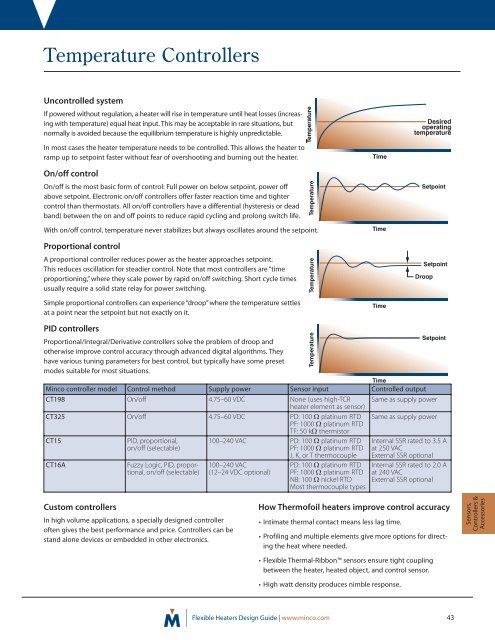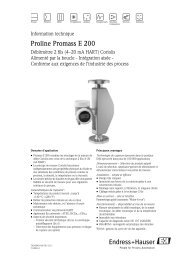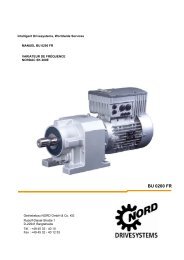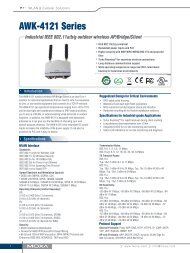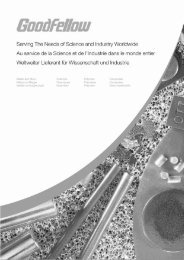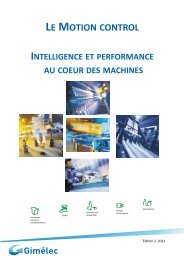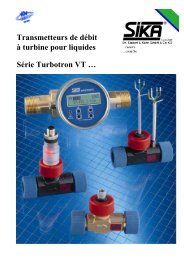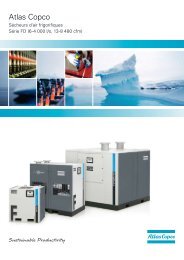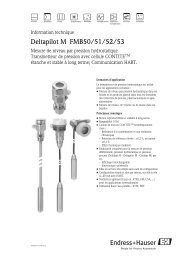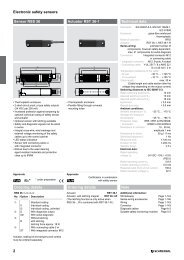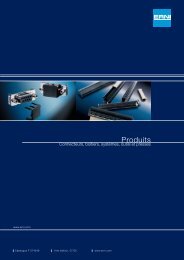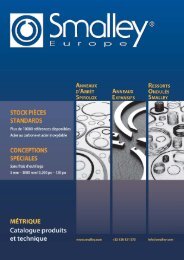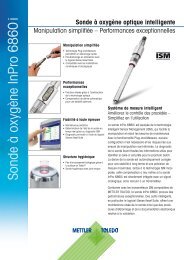Flexible Heaters Design Guide - BiS Sistem
Flexible Heaters Design Guide - BiS Sistem
Flexible Heaters Design Guide - BiS Sistem
Create successful ePaper yourself
Turn your PDF publications into a flip-book with our unique Google optimized e-Paper software.
Temperature Controllers<br />
Uncontrolled system<br />
If powered without regulation, a heater will rise in temperature until heat losses (increasing<br />
with temperature) equal heat input. This may be acceptable in rare situations, but<br />
normally is avoided because the equilibrium temperature is highly unpredictable.<br />
In most cases the heater temperature needs to be controlled. This allows the heater to<br />
ramp up to setpoint faster without fear of overshooting and burning out the heater.<br />
On/off control<br />
On/off is the most basic form of control: Full power on below setpoint, power off<br />
above setpoint. Electronic on/off controllers offer faster reaction time and tighter<br />
control than thermostats. All on/off controllers have a differential (hysteresis or dead<br />
band) between the on and off points to reduce rapid cycling and prolong switch life.<br />
With on/off control, temperature never stabilizes but always oscillates around the setpoint.<br />
Proportional control<br />
A proportional controller reduces power as the heater approaches setpoint.<br />
This reduces oscillation for steadier control. Note that most controllers are “time<br />
proportioning,” where they scale power by rapid on/off switching. Short cycle times<br />
usually require a solid state relay for power switching.<br />
Simple proportional controllers can experience “droop” where the temperature settles<br />
at a point near the setpoint but not exactly on it.<br />
Desired<br />
operating<br />
temperature<br />
Setpoint<br />
Droop<br />
Introduction<br />
<strong>Design</strong><br />
<strong>Guide</strong><br />
Polyimide<br />
<strong>Heaters</strong><br />
Silicone<br />
Rubber<br />
<strong>Heaters</strong> (foil)<br />
Standard<br />
Polyimide<br />
& Rubber<br />
PID controllers<br />
Proportional/Integral/Derivative controllers solve the problem of droop and<br />
otherwise improve control accuracy through advanced digital algorithms. They<br />
have various tuning parameters for best control, but typically have some preset<br />
modes suitable for most situations.<br />
Minco controller model Control method Supply power Sensor input Controlled output<br />
CT198 On/off 4.75–60 VDC None (uses high-TCR Same as supply power<br />
heater element as sensor)<br />
CT325 On/off 4.75–60 VDC PD: 100 Ω platinum RTD Same as supply power<br />
PF: 1000 Ω platinum RTD<br />
TF: 50 kΩ thermistor<br />
CT15<br />
PID, proportional,<br />
on/off (selectable)<br />
100–240 VAC PD: 100 Ω platinum RTD<br />
PF: 1000 Ω platinum RTD<br />
J, K, or T thermocouple<br />
Internal SSR rated to 3.5 A<br />
at 250 VAC<br />
External SSR optional<br />
CT16A<br />
Fuzzy Logic, PID, proportional,<br />
on/off (selectable)<br />
100–240 VAC<br />
(12–24 VDC optional)<br />
PD: 100 Ω platinum RTD<br />
PF: 1000 Ω platinum RTD<br />
NB: 100 Ω nickel RTD<br />
Most thermocouple types<br />
Internal SSR rated to 2.0 A<br />
at 240 VAC<br />
External SSR optional<br />
Rubber<br />
<strong>Heaters</strong><br />
(wire-wound)<br />
Mica <strong>Heaters</strong><br />
Thermal-Clear<br />
<strong>Heaters</strong><br />
All-Polyimide<br />
<strong>Heaters</strong><br />
Custom controllers<br />
In high volume applications, a specially designed controller<br />
often gives the best performance and price. Controllers can be<br />
stand alone devices or embedded in other electronics.<br />
How Thermofoil heaters improve control accuracy<br />
• Intimate thermal contact means less lag time.<br />
• Profiling and multiple elements give more options for directing<br />
the heat where needed.<br />
• <strong>Flexible</strong> Thermal-Ribbon sensors ensure tight coupling<br />
between the heater, heated object, and control sensor.<br />
Sensors,<br />
Controllers &<br />
Accessories<br />
Reference<br />
• High watt density produces nimble response.<br />
| <strong>Flexible</strong> <strong>Heaters</strong> <strong>Design</strong> <strong>Guide</strong> | www.minco.com<br />
43


